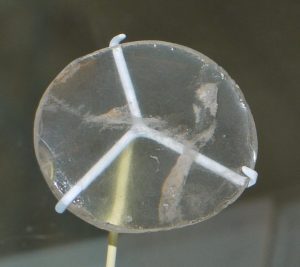WHAT COLOR IS ALIEN BLOOD?

If aliens are real, would their blood be as red as Earthlings? For decades, UFOs and aliens have been the unsolved secret of mankind. In the face of evidence, videos, stories related to this extraterrestrial creature, the world is divided into two extremes: One side does not believe – One side believes in the existence of extraterrestrials and UFOs – vehicles their state-of-the-art flight.

For scientists, life may exist in the vast universe in a different form than humans can imagine.
So if aliens existed, what color would their blood be? Professor, Dr. Dirk Schulze-Makuch at the Center for Astronomy and Astrophysics at the Technical University of Berlin, Germany will explore this issue.
As an astronomer, I am often asked, “What do aliens look like?”. When it comes to “aliens”, many people often think of them as complex extraterrestrial beings, animal-like and human-like in appearance.
From the natural history of life on our planet, we already know that biology opens up a lot of potential life forms. We also know that the shape of a complex organism depends largely on the environment in which the organism lives.
Since there are so many unknowns, let me address a small part of the question, the question that gets to the heart of the matter: Does an alien being necessarily have blood? And if so, what color is that blood?
Various blood colors on earth
My thinking was prompted by a paper by Zachary Rodriguez and colleagues from Louisiana State University (USA) describing New Guinea lizards with lime green blood.
Any complex life form, even on another planet, would most likely need a circulatory system to deliver nutrients to its body’s cells and remove waste. This is generally true of all the more complex animals on Earth (although some
very primitive animals like sponges don’t have blood).

Professor, Dr. Dirk Schulze-Makuch. Photo: Felix Noak / Gfz-potsdam.de
Even plants have some kind of circulatory system, with fluids moving throughout their “body”. We don’t think it’s blood, but when a tree is cut off a part of its body, it transfers nutrients and minerals around the cut to seal the wound –
similar to blood clotting in animals. .
Blood is ingrained in our psyche. We are strongly affected when we see the red liquid of life flowing out of our own body or the body of another. Most of our vertebrates also have red blood because Hemoglobin (hemoglobin) contains iron, which carries oxygen from the lungs (or gills) to tissues in the rest of the body.
One might think that any highly evolved organism would be the same, but that is not necessarily the case. For example, the blood of some species of octopus – one of the most intelligent species on our planet – is blue when supplied with oxygen. Instead of Hemoglobin, their blood uses copper-containing Hemocyanin as the oxygen-carrying protein.
Some spiders, horseshoe crabs, and scorpions also have blue blood

Prasinhaema prehensicauda, a lemon-yellow blooded lizard found in New Guinea. (Photo: Chris Austin / LSU)
In the Star Trek universe, Vulcans and Romans have green blood, while Andorian blood is blue.
And of course, we assume that people born of noble lineage have blue blood. If true, it is possible that some of them were diagnosed with Sulfhemoglobinemia – Sulfhemoglobinemia is a rare condition in which an excess of Sulfhemoglobin (SulfHb) in the blood causes the blood to appear blue.
People exposed to many sulfur-containing compounds sometimes have their skin turn blue, while their blood may turn dark blue, green, or black. This happens because a sulfur atom is incorporated into the Hemoglobin in the blood (don’t worry if that happens to you, once your body gets rid of the sulfur your blood will turn red again).
For blue-blooded lizards, that color comes from the green bile pigment Biliverdin. It may be an adaptation to fight the parasite. [This is
the pigment that causes the greenish color sometimes seen in bruises].
Other green-blooded animals include earthworms and leeches, which have the oxygen-binding protein chlorocruorin in their plasma; and some insects
get their pigments from plants.
In fact, blood color strongly depends on the habitat of the organism, including humans. Orange wings have yellow blood; Brachiopods have pale purple blood; And if you live often in cold environments, your blood can become cloudy because cold water can contain so much oxygen that Hemoglobin (hemoglobin) becomes unnecessary.
In short, there is no single, definitive answer to the color of alien blood. We can only say that any alien has blood. But that blood can be any color, depending on the specific biochemistry of the organism and the environment in which they live.




